Philodendron Mayoi Care is not difficult if you follow our guide on How to Grow Philodendron Mayoi. Read on for all the details!
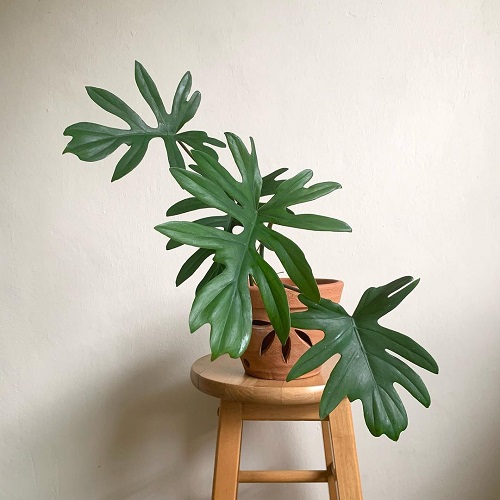
Tropical philodendrons are all the rage these days. These lush and leafy plantain specimens are a dream come true for all indoor jungle enthusiasts. Follow our guide to learn about Philodendron Mayoi Care and How to Grow Philodendron Mayoi.
Botanical Name: Philodendron Mayoi
USDA Zone: 9-11
Here are the Best Colourful Philodendron Varieties
Philodendron Mayoi Plant Information
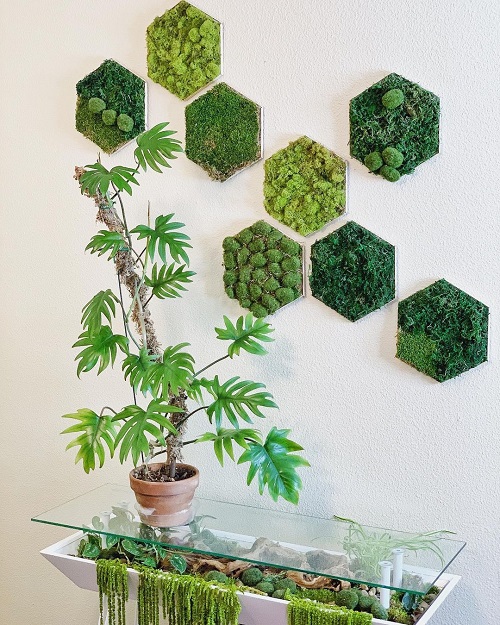
Philodendron Mayoi belongs to the Araceae family. It is a versatile and low-maintenance plant, making it a popular choice among enthusiasts.
It is native to the tropical regions of Central and South America and is known for its unique foliage, featuring glossy, dark green leaves with striking white veins.
Philodendron Mayoi is known for its ability to adapt to different growing conditions, making it ideal for growing in various indoor environments. With its attractive appearance and ease of care, it is an excellent addition to any indoor collection.
Learn about Growing Philodendron cordatum here
How to Propagate Philodendron Mayoi
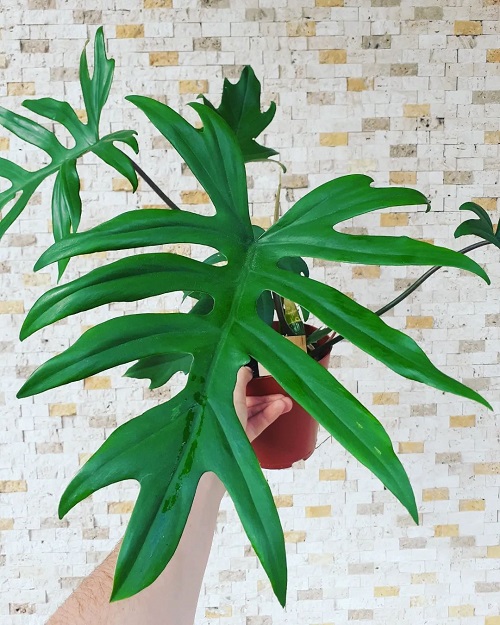
To propagate Philodendron mayoi through stem cuttings, follow these steps:
- Obtain a healthy stem cutting approximately 5-6 inches in length, with foliage and a node present.
- Prune off the leaves below the node, leaving 2-3 leaves at the top of the stem.
- Immerse the node in a clear glass vessel filled with water, ensuring the leaves remain above the waterline.
- Place the cutting in an area that receives bright, indirect light.
- Regularly change the water to maintain freshness and prevent bacterial growth.
- Observe the stem for the emergence of roots, which typically appear within a month. Once they reach approximately one inch in length, transplant the cutting into a well-drained potting medium.
- Maintain consistent moisture levels in the potting soil and provide bright, indirect light to promote successful cutting establishment.
Learn the Pink Princess Philodendron Care Tips Here
Requirements for Growing Philodendron Mayoi
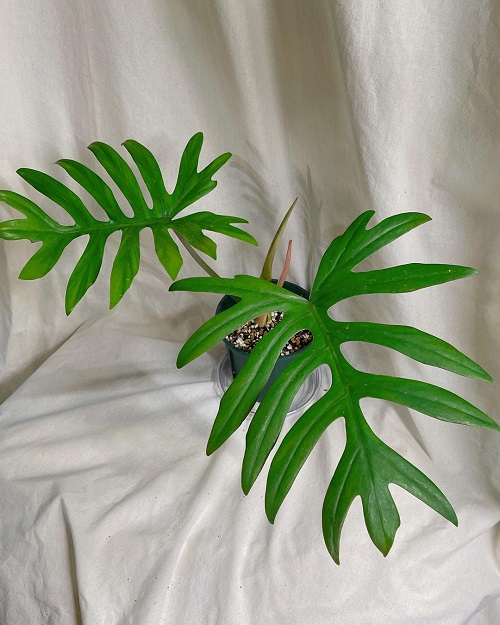
Location
The ideal growing environment for your Philodendron mayoi includes bright, indirect light. A few hours of morning sun near a north or east-facing window is best, but prolonged exposure to intense sunlight may cause yellowing or scorch marks on its leaves.
To promote even growth, it is advisable to rotate the plant weekly.
Soil
The soil should be slightly acidic, well-drained, loose, and rich in nutrients. A recommended soil blend is one part potting soil, one part orchid bark, and one part perlite.
Water
The soil should be allowed to dry partially before watering, and it is important to avoid overwatering as it can lead to root rot. Wait for the top 2-4 inches of the soil layer to feel half dry to the touch and then water.
Temperature
Philodendron mayoi thrives in warm and humid conditions. The ideal temperature range for optimal growth is between 65° – 80°F or 65°F or 18 – 26°C.
Humidity
The ideal humidity level should be above 60 percent for Philodendron mayoi. To maintain proper humidity levels, consider using a humidifier, grouping the plant with similar humidity-loving plants, or placing it on a pebble tray filled with water.
Check out Super Useful Homemade Fertilizers for Indoor Plants here
Philodendron Mayoi Care
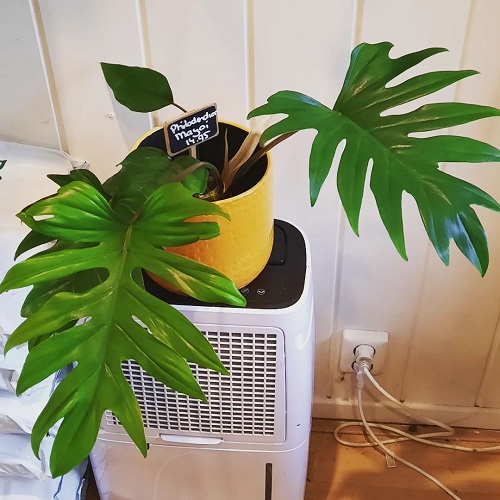
Fertilizer
To promote optimal growth, feed Philodendron Mayoi with a balanced, diluted liquid fertilizer once in 7-8 weeks during the active growing season (spring and summer).
Avoid over-fertilization, as this may result in root burn and yellowing foliage. During the dormant season, abstain from fertilization.
Pruning
In terms of pruning, eliminate any unhealthy or dead stems or foliage. Also, trim Philodendron Mayoi if it grows excessively tall for the available space.
To encourage new growth and maintain a bushy, compact appearance, trim a few inches off the stems above a node.
Pests and Diseases
Philodendron mayoi is susceptible to various pests and diseases that can negatively impact its health and appearance. Common pests include spider mites, mealybugs, and scale insects, which can cause yellowing, wilting, and stunted growth if left unchecked.
Diseases such as root rot and powdery mildew may also develop, typically due to overwatering or poor air circulation.
Check out the best Indoor Philodendron Varieties that you can grow here
Common Problems with Philodendron Mayoi
The plant may encounter problems due to improper care. However, these issues can often be resolved with minor adjustments to their care regime:
Yellow Leaves
If you notice yellow leaves on your Philodendron mayoi, it could be an indication that it is exposed to excessive sunlight or over-fertilized.
Relocate the plant to a shadier location and reduce the frequency of fertilization. Also,it is important to maintain consistent watering practices to prevent wilting and discoloration.
Brown Tips
Brown tips on the leaves of your Philodendron mayoi may result from prolonged exposure to direct sunlight or inconsistent watering.
To rectify this, it is advised to regulate the plant’s exposure to sunlight and to establish a consistent watering schedule to ensure the soil remains evenly moist.

